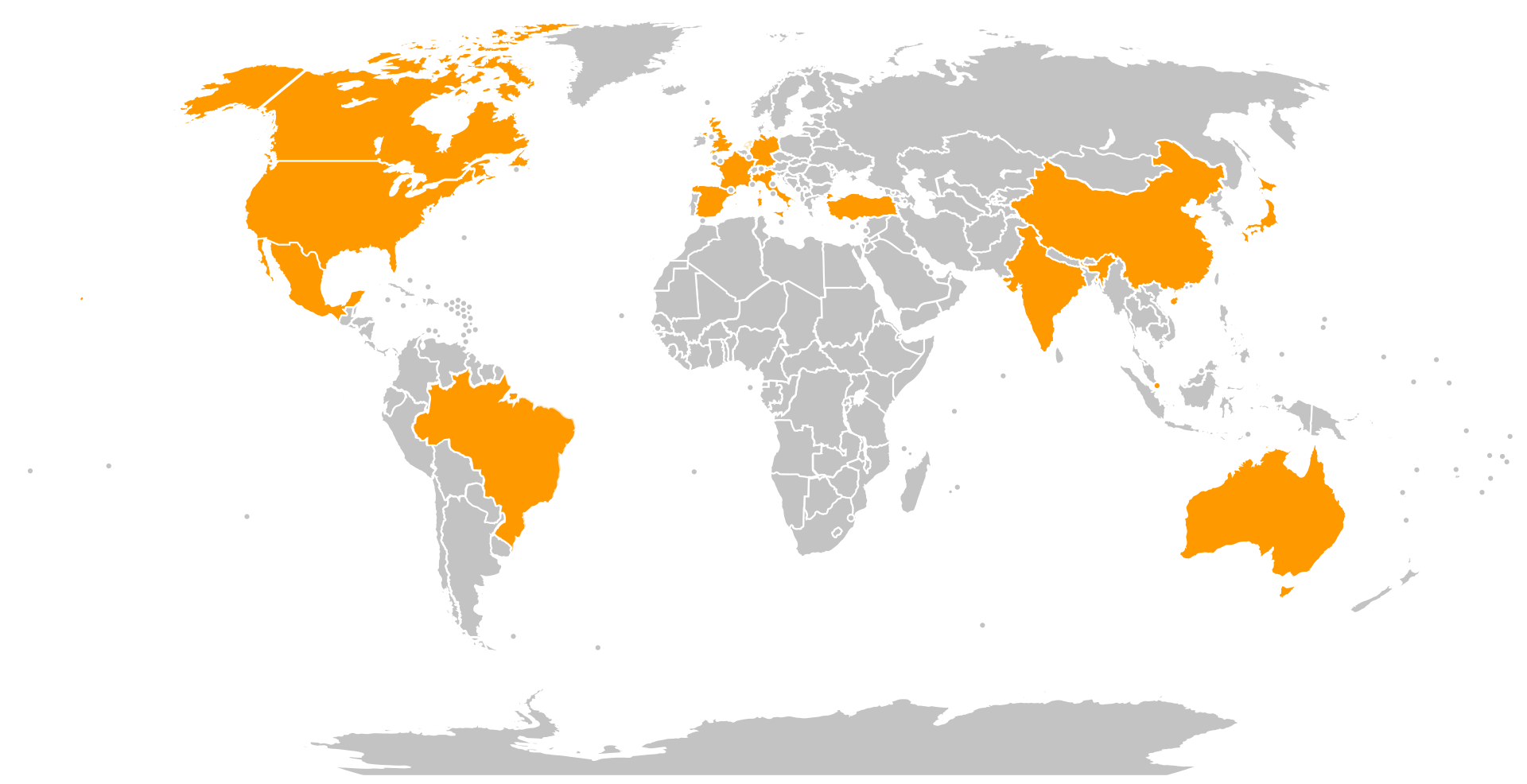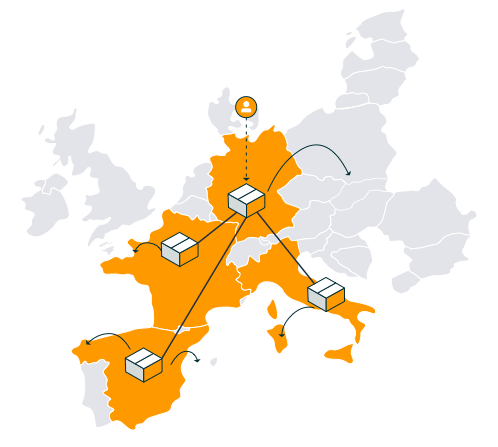E-commerce has become, more than ever before, a world trade place: sellers and buyers can now be either neighbors or could also be located in exact opposite cities across the globe.
As a seller, your opportunities to sell worldwide are tremendous, but can still be considered as a complex and a risky adventure.
There are indeed a large bunch of common beliefs regarding how difficult selling abroad can be; this article will, on the contrary, emphasize on how Amazon marketplace can be used as an easy international expansion catalyst.

We all know that Amazon is big, but how big, here are a few figures:
– 300M clients arount the world
– More than 180 delivery covered countries
– 15 localized websites (US, CA, MX, FR, DE, US, ES, IT, NL, SW, JP, AU, SG, IN, AE, TU)
SUMMARY
- Common belief #1: International shipping is expensive & complex to setup
- Common belief #2: Cross-border business requires to translate all your products
- Common belief #3: Monitoring exchange rates is mandatory when selling out of the Eurozone
- Common belief #4: Inventory level has to be synchronized more often when selling to new countries
- Common belief #5: International business is possible in Europe, but is out of reach in America
- Common belief #6: Selling abroad requires to hire bilingual people
- Common belief #7: International returns are complex
- Common belief #8: For each new country, everything has to be restarted from scratch
Common belief #1: International shipping is expensive & complex to setup
If you are reading these lines you are very likely already selling online products, to at least your own country and therefore have local contracts with carriers that you are familiar with. Did you ever ask your currently used carriers whether they could ship internationally ? Some of them probably can but obviously at higher cost and increased transport time.
What about if you could have localized warehouses in each targeted country to reduce this customer-critical transport time ? That may sound very costly, but this is actually exactly what Amazon Pan European FBA solution is offering to merchants.
This solution enables you to send in bulk your products to one Amazon warehouse and then based on where you decide to sell, Amazon automatically transfers your products so that they can be shipped from the same country as the buyer!
No local logistic hassle to manage at a competitive cost, with a great customer experience.
Furthermore, if FBA is used your products are eligible to the “Amazon Prime” loyalty program (150M users as of 2020) and also more likely to win the very popular Buy Box.
Common belief #2: cross-border business requires to translate all your products
When speaking about selling internationally, one of the first things that cross our mind is the need to adapt content to several foreign languages.
If your product catalog has only a few products, the workload is pretty easy to absorb, however, if your total number of active products is higher than several hundred products, that may become a significant amount of work.
If there are obviously lots of online translation services available, Amazon can help you differently to start selling abroad.
Using Amazon Build International Listings, you can ask Amazon to synchronize your products (from your local country) to some other European countries.
Amazon will, for all already existing products, link your offers automatically!
To sum-up, in a few clicks if you have already some products synched in one Amazon country you can push them to other countries without having to translate them! Such a tool is a great opportunity to test at a low setup cost some new countries. 😀
Common belief #3: monitoring exchange rates is mandatory when selling out of the Eurozone
 Local adaptations unfortunately do not stop there, depending on your home country and targeted ones, you may also need to convert prices to the targeted country local currency.
Local adaptations unfortunately do not stop there, depending on your home country and targeted ones, you may also need to convert prices to the targeted country local currency.
Most frequent case for a European seller is selling in the UK using GBP.
Even though the EUR/GBP exchange rate has low volatility, depending on your profit margin you could be exposed to bad surprises if not seriously monitored.
Once again Amazon through Build International Listing can take care of this for you.
Once defined some pricing rules (such as increasing prices by x%) between your home country prices, Amazon automatically converts prices in GBP and adapts them whenever needed.
This automated currency conversion can also be disabled if you prefer to define prices yourself, in such case you’ll need to define separate price values for each of your product sold internationally and may need to use an e-commerce feed manager for better efficiency. 😉
Common belief #4: Inventory level has to be synchronized more often when selling to new countries
Among closely monitored KPIs, rejected orders rate is on top of Marketplaces’ “radar list”.
Selling internationally to new marketplaces could bring more complexity to the game: the larger number of distribution channels you manage, the more sensitive synchronization rate becomes.
Amazon seems well aware of this issue, and offers different solutions to cover it:
- First solution is to use as indicated above (#1) Amazon FBA, inventory level then becomes Amazon’s issue and you don’t have to handle it anymore.
- Second solution if you prefer shipping goods yourself is to use similar SKUs across countries listings, and then just let – once again – Amazon synchronize levels across countries.
It’s indeed important to know that SKU inventory levels are shared across all Amazon countries within zones: EU / America. In other words that means that whenever a product is sold in one country, its stock level is decremented for all active countries.
Common belief #5: international business is possible in Europe, but is out of reach in America
Crossing the Atlantic ocean sounds pretty exciting once done by plane as a tourist, but sounds actually very complex to manage from an ecommerce perspective.
Lots of additional barriers seem to interfere in this out of Europe journey: shipping time, import tax, customs, customer returns.
These new barriers can, once again, be managed thanks to Amazon marketplace.
Even if that might not be obvious at first sight, EU and US Amazon seller accounts can be synchronized together, and you can then benefit from the same features as if you were using “BIL” within an EU account.
All you need to do is to:
- Create your US seller account
- Link your existing EU seller central account with the newly created US one
- Use “Build International Listing” to sync your EU products with already existing ASIN in the US
- Send your inventory in “bulk” to an Amazon US warehouse.
🍒 Cherry on the cake: thanks to this “Atlantic bridge” you’ll not be limited to the US, but Mexico and Canada will be within reach !
Common belief #6: selling abroad requires to hire bilingual people
International usually goes along with foreign languages, especially in Europe where 24 different languages are officially reported by the EU institutions.
If with foreign suppliers, English is commonly used, only local languages can be used when dealing with end consumers.
Fortunately one of the biggest advantages of ecommerce is that conversations are asynchronous since most of them time exchanges are done by emails or equivalent.
Leveraging this asynchronous messaging is easy thanks to contemporary translation solutions such as commonly used Google Translate, or a newcomer with great results: Deepl.
Additionally, bear in mind that if you use Amazon FBA, most of customer support will be handled by Amazon directly.
Common belief #7: international returns are complex
E-commerce comes along with lots of benefits for both sellers and buyers, however when some orders have defects, that can become very complex to manage especially for large products.
Adding the “international” variable to customer service can make its management become, if not well anticipated, a real nightmare.
Unless you have reached a significant size and can hire dedicated multi-language customer service agents, one plug and play solution is once again to use Amazon Pan European FBA that takes care of both customer service and orders returns.
Common belief #8: for each new country, everything has to be restarted from scratch
Opening a new country, in a traditional business, goes along with lots of newcomers’ barriers to overcome. These barriers put together represent a significant opportunity cost that could prevent some new countries from being studied.
However, as seen previously thanks to Amazon most of these barriers are managed through the combination of FBA and BIL: you can then decide to open up new countries among Amazon enabled countries at ease and avoid most hassle.
If you are now relieved regarding your international e-commerce expansion and aware that Amazon can help you significantly in most operational steps (products, prices, logistics, customer care), you may still have to check 2 last aspects:
- Administrative and tax declaration that need to be executed, including the very recent VAT directive 2017/2455
- How to synchronize products, prices and inventory for your home Amazon account that would then be used as source for international expansion.

Charles Barat
Co-founder & CPO at BeezUP





